BME Vegyészmérnöki és Biomérnöki Kar választható kutatási témái külföldi hallgatóknak
Utolsó frissítés: 2025. február 27.
Koordinátor:

Dr. Kállay-Menyhárd Alfréd
Egyetemi docens
Dékánhelyettes
menyhard.alfred@vbk.bme.hu
+36 1 463 - 3477
PublikációkAlkalmazott Biotechnológia és Élelmiszertudományi Tanszék
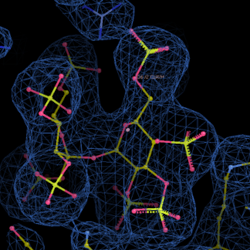
Structural and biochemical analysis of glycosaminoglycan biosynthesis enzymes
Témavezető: Gergely N. Nagy (Genome Metabolism Research group, nagy.gergely.nandor@vbk.bme.hu)
The project aims to understand the structural basis of specific modifications provided by glycosaminoglycan biosynthesis enzymes.
Módszerek: molecular cloning, recombinant protein expression, enzyme activity assay, substrate specificity analysis: in vitro (ITC, BLI), x-ray crystallography, molecular docking
Location: Genome Metabolism Research group (Department of Biotechnology and Food Processing and Institute of Enzymology, Research Centre for Natural Sciences)
Email: nagy.gergely.nandor@vbk.bme.hu
Heparan sulfate and chondroitin sulfate glycosaminoglycans (HS and CS GAGs) are major components of the extracellular matrix and regulate diverse functions in development and homeostasis including cell adhesion and migration, injury, anticoagulation and angiogenesis. HS and CS GAGs are produced in a template-free process that is primarily governed by the spatial arrangement and temporal availability of biosynthesis enzymes. Deciphering the GAG modification specificity of key biosynthesis enzymes greatly further understanding of their role in the biosynthetic pathway, and allow deciphering their bioactive cues in a range of biological functions and disease states.
We take a structural and enzymology based approach to understand the molecular basis of substrate selectivity of target HS/CS biosynthesis enzymes. Specifically, the layout of the thesis project starts with molecular cloning of target genes followed by exploring protein engineering strategies for recombinant protein production in Esherichia coli or eukaryotic hosts. To dissect substrate selectivity, enyzme activity assays and in vitro substrate binding studies will be conducted. The structural basis of enzyme-substrate interactions will be adressed using protein crystallization and x-ray crystallography.
The project will be implemented in an academic research environment and allows the student to adopt essential routines to work in a molecular biology laboratory and acquire skills for relevant state-of-the-art techniques and mastering the corresponding molecular biology, biochemistry and structural biology software tools. Research results will be discussed on regular progress progress meetings, and successful research advancements could be disseminated on Student Research Conference (Tudományos Diákköri Konferencia) and on Hungarian or international meetings as well as in peer-reviewed publications.
Fizikai Kémia és Anyagtudományi Tanszék
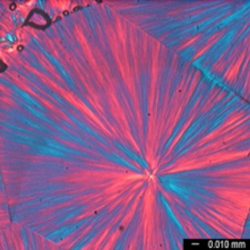
Modification of crystalline structure of semicrystalline polymers
Témavezető: Alfréd Kállay-Menyhárd (Laboratory of Plastics and Rubber Technologies, menyhard.alfred@vbk.bme.hu)
The project deals with the targeted manipulation of crystalline structure in semicrystalline polymers. In addition general structure-property correlations are developed also, which can be used for prediction and designing of structures and properties.
Módszerek: DSC, TGA, WAXS, microscopy, polymer processing (internal mixer, extruder, injection molding), mechanical and optical tests
Location: Laboratory of Plastics and Rubber Technology (Building H/1)
Department of physical chemistry and Materials Science
Email: menyhard.alfred@vbk.bme.hu
Semicrystalline polymers are used in our everyday life as commodity polymers, because of their advantageous properties and usually due to their low costs. The properties of these polymers, however are strongly dependent on their complex crystalline structure. Isotactic polypropylene is a very good example for this, since it is a cheap polymer and its properties can be varied within a wide range throughout the targeted manipulation of its crystalline structure. Recently this polymer is used as transparent baby bottle or as car bumper as well. A special additive called nucleating agents is used in the industrial practice in order to change the crystalline structure and consequently the properties. Although, the basics of crystallization and nucleation are well-known in the literature every single material has its own characteristics, thus the development of general structure-property correlations, which can be used for designing better products is complicated and consequently their number is limited. The main goal of this project is to develop such general correlations between the structure and the mechanical and/or optical properties of semicrystalline polymers as well as the designing of unique structures with expectedly unique properties.
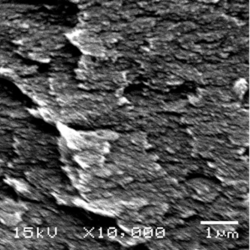
Production, characterization and application of cellulose nanocrystals
Témavezető: Emília Csiszár (Laboratory of Plastics and Rubber Technologies, csiszar.emilia@vbk.bme.hu)
The project deals with the preparation of nanocellulose nanocomposites, produced by addition of different plasticizers and cross-linking agents to cellulose nanocrystals.
Módszerek: ultra-sonication, particle size analysis by laser diffractometer, UV-Vis spectroscopy, haze-index test, WAXS, electron microscopy, mechanical tests, TGA, DMA, water sorption
Location: Laboratory of Plastics and Rubber Technology (Building H/1)
Department of Physical Chemistry and Materials Science
Email: csiszar.emilia@vbk.bme.hu
One of the most abundant polymers of biomass is cellulose, a linear macromolecule that forms fibrillar structure with high crystallinity. Recently, the most promising research area in the field of cellulosic materials is aiming to recover the crystalline units and investigate the properties and possible application areas of these so called cellulose nanocrystals (CNCs). The rod-like nanoparticles combine the excellent properties of cellulose with fascinating characteristics of the nano-sized materials. A promising application of CNCs is the production of thin films. Properties of these films are to be improved, for instance by adding plasticizer and cross-linking agents to nanocrystal suspensions during film casting. Cross-linking of nanocrystals causes a tough network structure, in which crystals are chemically linked. Different cross-linking agents are about to be tested in the frame of the project.
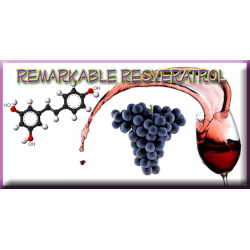
Investigation of the stabilization efficiency of natural and synthetic antioxidants in Phillips-type polyethylene
Témavezető: Kata Takács, Dóra Tátraaljai (Laboratory of Plastics and Rubber Technologies, tatraaljai.dora@vbk.bme.hu)
The aim of this research is to investigate the stabilizing effect of natural antioxidants (plant extracts, lignin, resveratrol etc.) and synthetic stabilizing agents in polyethylene during processing.
Módszerek: extrusion, rheological, mechanical and thermal tests, colour measurement, spectroscopy
Location: Laboratory of Plastics and Rubber Technology (Building H/1
Department of Physical Chemistry and Materials Science
Email: tatraaljai.dora@vbk.bme.hu
Polyethylene (PE) is a commodity polymer applied in large quantities in many areas of life. This polymer has low density, it is translucent, water-resistant, harmless for human health, recyclable and cheap. However polyethylene has to be protected against degradation which occurs as an effect of heat, shearing, oxygen and/or UV light during processing, storage and application. Degradation means that chemical processes take place in the polymer, which cause changes in the chemical and physical properties of the product. To stop these degradative reactions and to preserve favourable properties of the polymer stabilizing agents are applied. Different synthetic antioxidants are used for stabilization in practice. Replacing synthetic stabilizers by natural antioxidants (e.g. lignin, vitamins, flavonoids) could stop worries caused by the possible harmful effects of their reaction products on human health. The stabilization of polyethylene with natural antioxidants for packaging materials is a new challenge both from the scientific and the industrial point of view. Tasks: 1) Investigation of the composition and of the properties of natural antioxidants; 2) Degradative extrusion of polyethylene with different amount of additives; 3) Characterization of extruded polymer samples: rheological (MFI), mechanical and thermal (DSC, TGA, OIT) tests, colour measurement, spectroscopy (FTIR), microscopy (DOM, SEM)
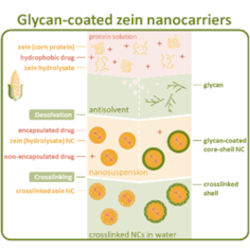
Protein-glycan core-shell nanocarriers for drug delivery and controlled release
Témavezető: Balazs Imre (Laboratory of Plastics and Rubber Technology, imre.balazs@edu.bme.hu)
We design and synthesize plant protein and synthetic proteinoid nanocarriers with glycan outer shells for the encapsulation and controlled delivery of poorly water-soluble active substances.
Módszerek: antisolvent precipitation, enzymatic hydrolysis and cross-linking, lyophilization, DLS, ζ-potential measurement, SAXS, SEM, UV-Vis, HPLC
Location: Laboratory of Plastics and Rubber Technology (Building H)
Department of Physical Chemistry and Materials Science
Email: imre.balazs@edu.bme.hu
Poor water solubility and bioavailability limits the efficacy of numerous active substances. Their encapsulation with nanoparticles improves solubility and stability, enabling the use of drug candidates previously ignored due to poor pharmacokinetics. Proteins are non-toxic, biodegradable, and metabolizable natural amphiphilic polymers that form nanoparticles by environmentally benign self-assembly to encapsulate various compounds. Their surface can be conveniently modified with drugs and targeting ligands. In this project, protein-glycan core-shell nanocarriers are prepared by nanoprecipitation and enzymatic cross-linking, following green chemistry principles. In addition to their size distribution, drug encapsulation and release characteristics, we aim to study and mitigate the immune response induced by the nanocarriers in vivo.
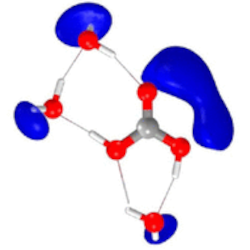
Development of ab initio and density functional quantum chemical methods
Témavezető: Mihály Kállay (Spectroscopy Laboratory, kallay@mail.bme.hu)
In this project we develop ab initio and density functional methods for the accurate theoretical modeling of large molecular systems.
Módszerek: quantum chemistry, ab initio correlation methods, density functional theory, programming
Location: Spectroscopy Laboratory (Building F, Staircase I, 1st floor)
Department of Physical Chemistry and Materials Science
E-mail: kallay@mail.bme.hu
Modern quantum chemistry enables the theoretical determination of numerous molecular properties. The theoretical results, because of the approximations invoked, are frequently inaccurate, and even today, quantum chemical calculations with experimental accuracy are only feasible for small molecules. The main purpose of this project is to develop new quantum chemical methods that are applicable to large molecules and simultaneously provide results sufficiently close to the experimental data. The existing accurate methods are currently practical for molecules of up to a couple of dozens of atoms since their computational expenses are high, that is, a calculation takes for a long time and requires high-performance computers. The considerable computational cost can be explained by the fact that these models are based on the solution of large systems of equation, frequently including several billions of variables. In general, the more accurate a methods is, the more variables are required and the higher the computational expenses are. The accuracy goal will be achieved, on the one hand, through the reduction of the computational cost of accurate quantum chemical calculations, without sacrificing accuracy. On the other hand, approximations based on the electron density will be used, which can be parametrized by a smaller number of variables. In addition, models will be developed that describe the chemically important part of a molecule using an accurate but expensive method, while a lower-level but cheaper approach is employed for the rest of the system. The developed methods will be applied to real-life problems in various fields of chemistry.
Kémiai és Környezeti Folyamatmérnöki Tanszék
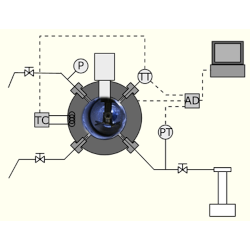
High pressure phase equilibrium measurements and modelling
Témavezető: Márton Kőrösi (Extraction and High Pressure Research Group, mkorosi@edu.bme.hu)
The main objective of this project is to determine the solubility of selected target compounds in pressurized carbon dioxide and expanded solvent mixtures in function of temperature and pressure.
Módszerek: view cell measurement, specialized high pressure equipment, mathematical model fitting, ASPEN+
Location: Extraction and High Pressure Research Group (Building F II) Department of Chemical and Environmental Process Engineering
Email: mkorosi@edu.bme.hu
In order to be able to design a separation or reaction process, it is essential to know the phase equilibrium behaviour of the compounds involved. The task is to perform systematic cloud point measurements and evaluate the data. The student selecting the topic will learn how to handle, assemble, and disassemble a top-quality high-pressure phase equilibrium measurement unit and to use suitable software for fitting models to the measured data. The topic is open to students (max 2 in each semester) able to perform laboratory work with high accuracy and in a reliable manner. The results are going to be used to design separation or reaction setups and in international journal publications, where the student is a coauthor if their contribution is of high value.
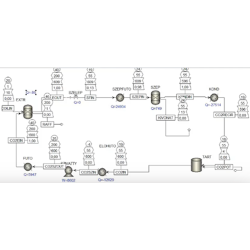
Simulation and optimization of a high pressure process
Témavezető: Edit Székely (Extraction and High Pressure Research Group, edit.szekely@edu.bme.hu)
In the previous experimental investigations in the High Pressure Research Group large number of experimental data was collected on biorefinery concept based extraction series. The task of the thesis is to create a simulation suitable for technological and economical optimization.
Módszerek: Statistica, ASPEN+, Excel etc.
Location: Extraction and High Pressure Research Group (Building F II) Department of Chemical and Environmental Process Engineering
Email: edit.szekely@edu.bme.hu
Simulations are great tools to optimize a process and to decide on economical feasibility. However, simulated results are only trustable if they are correlated or verified by experiments. The goal of the thesis is to build simulations correctly describing real experimental datasets of a certain process, and use the model for parameter optimization and economical evaluation of a scaled up plant.
Szervetlen és Analitikai Kémia Tanszék
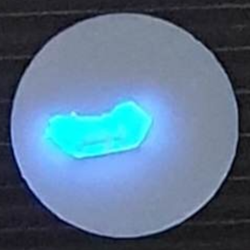
New fluorescent inorganic ring systems
Témavezető: Dr. Zsolt Kelemen (Modern Inorganic Materials Research Group, kelemen.zsolt@vbk.bme.hu)
The project deals with the synthesis of new inorganic ring systems and investigating their photophysical behavior.
Módszerek: Synthetic chemistry, UV-Vis, PL, NMR, IR (DFT calculations)
Location: Modern Inorganic Materials Research Group (Building Ch 141)
Department of Inorganic and Analytical Chemistry
Email: kelemen.zsolt@vbk.bme.hu
The three dimensional carborane clusters exhibit exceptional thermal and chemical stability, tailorability and unusually low toxicity, which provide performance superior to that of conventional materials. We have demonstrated that carborane fused heterocycles possess unique properties and the character of the fused ring system changed drastically compared to their purely organic counterparts. The bonding situation of the exo-ring strongly depends on the position of the different heteroatoms, and the symmetric carborane fused systems showed shorter bonds and higher Wiberg-indices around the heteroatom compared to their oligo-aromatic counterparts. Due to the above mentioned facts, these systems have small HOMO-LUMO gap and according to our preliminary results, they exhibit fluorescence characteristics. The topic of recent diploma thesis work is the synthesis of the above-mentioned new ring systems.
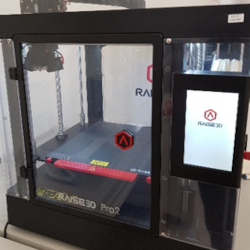
Design and fabrication of 3D printed flow cells for potentiometric measurements
Témavezető: Soma Papp (BME Lendület Chemical Nanosensors Research Group, papp.soma@vbk.bme.hu)
This project aims to develop a fully 3D printed flow system suitable for continuous potentiometric analysis by integrating multiple ion-selective electrodes.
Módszerek: 3D printing, Potentiometry, Voltammetry, Microscopy, FIA
Location: BME Lendület Chemical Nanosensors Research Group (Building Ch. 102.)
Department of Inorganic and Analytical Chemistry
Email: papp.soma@vbk.bme.hu
Ion-selective electrodes are the most established tools for analyzing ion concentrations in various samples, notably blood serum and natural water samples. Currently, the large number of measurement needs are met by using fully automated flow-through systems containing the necessary number of ion-selective electrodes and a reference electrode. 3D printing is a powerful yet convenient tool for fabricating custom-designed structures for specific purposes. However, finding the optimal polymer material and various settings during the printing process remains challenging. The project aims to develop a fully 3D printed flow system suitable for continuous potentiometric analysis by integrating multiple ion-selective electrodes. The work involves learning a 3D modeling software to design the system and optimizing the printing settings. Meanwhile, the work requires the fabrication of solid-contact ion-selective electrodes, using various materials, and the integration of such electrodes into the 3D printed system. The last step will involve the validation of the system with artificial blood serum samples.
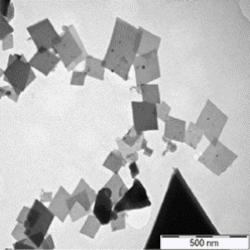
Preparation and application of functional nanostructures
Témavezető: Dr. Imre Miklós Szilágyi (Materials Science Analysis Group, szilagyi.imre.miklos@vbk.bme.hu)
The project deals with the targeted preparation of functional nanomaterials with tailored properties for photocatalysis, gas sensing and nanofluids.
Módszerek: XRD, SEM-EDX, TEM, Raman, FTIR, UV-Vis, TG/DTA-MS, Photocatalysis, Gas sensing, Nanofluid
Location: Ch. I. 123. (lab), Ch. I. 114. (office)
Department of Inorganic and Analytical Chemistry
Email: szilagyi.imre.miklos@vbk.bme.hu
Detection and decomposition of pollutants, preparation of novel and cheaper green catalysts, making novel materials for energy saving applications are environmental research priorities, and the project aims to obtain materials capable to perform these tasks. The research focuses on the synthesis of complex nanostructures based on semiconductor oxide (e.g. WO3, TiO2, ZnO, Al2O3 nanoparticles, nanotubes, nanofibers), and carbon nanostructures (e.g. carbon nanotubes, graphene oxide, carbon nanospheres). For this various techniques might be used, e.g. atomic layer deposition (ALD), annealing, hydrothermal, sol-gel and electrospinning synthesis methods. The as-obtained nanocomposites will be studied as gas sensors, photocatalysts and in heat exchanger nanofluids. The influence of the composition, morphology and structure of the nanostructures on the applications will be analyzed with the aim to program the properties to achieve the planned performance.
Szerves Kémia és Technológia Tanszék
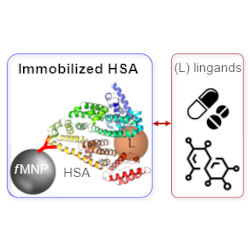
Investigation of human serum albumin with bioactive ligands
Témavezető: Diána Balogh (Bioorganic Chemistry Research Group, balogh.weiser.diana@vbk.bme.hu)
The binding of bioactive ligands to human serum albumin (HSA) is an important aspect in the drug discovery. The aim is to investigate the HSA-ligand interactions by a high through put screening tool applying HSA immobilized onto functionalized magnetic nanoparticles (fMNP).
Módszerek: well plate methods, UV–Vis, LC–MS, DLS, Zeta sizer
Location: Building Ch, floor 2, laboratory 214
Department of Organic Chemistry and Technology
Email: balogh.weiser.diana@vbk.bme.hu
The medical and pharmaceutical sciences aim the synthesis of an increasing number of compounds with high diversity, targeting the deeper understanding of the physiological function of proteins and enzymes and / or to influence and regulate them for better therapeutic functions. Human serum albumin (HSA) as the most abundant protein in plasma and body fluids and they interact with drug molecules. HSA-drug binding directly influences the pharmacokinetic behavior of the administered drug and their specific enzymatic activity may represent a metabolic effect as well. HSA-drug molecule interactions usually based on reversible complexes by electrostatic and hydrophobic forces. While biological membranes are not permeable for these complexes drug become therapeutically inactive. In addition, HSA has esterase and an aryl-, acyl-amidase activity. Thus, the HSA-binding affinity of the different bioactive agents is a key parameter, which must be defined in the early drug research. HSA bounded on silica gel is applied as commercially available classic HPLC columns for the investigation of drug-HSA binding profiles. However, these columns are expensive, and the potential compounds can only be produced in limited quantities. Thus, the development of methods and tools suitable for rapid analysis applying small sample sizes can be a key issue. This project is introducing a well-plate-based method applying HSA immobilized on functionalized magnetic nanoparticles, which could be a promising pre-screening tool for the investigation of HAS-bioactive ligand interactions. By the comprehensive optimization of the surface properties of nanoparticles, the behavior of HSA could be well-mimicked similar to their native form in vivo and the stability of the protein could also be enhanced allowing robust applications.
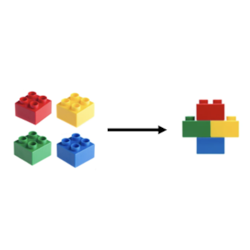
Multicomponent synthesis of isatin-based spirocycles
Témavezető: Erika Bálint (Innovative Pharmaceutical and Chirotechnological Research Group, balint.erika@vbk.bme.hu)
The project deals with the multicomponent synthesis of isatin-based spirocycles.
Módszerek: microwave reactor, continuous flow microwave reactor, CombiFlash Rf Flash Chromatography System HPLC, HPLC-MS, NMR
Location: Building F I, floor 2, laboratory 201
Department of Organic Chemistry and Technology
Email: balint.erika@vbk.bme.hu
Multicomponent reactions (MCRs) emerged in the past decades, and continuously attract great attention as one of the most useful and efficient tools for the synthesis of versatile heterocyclic compounds. The following advantages can be highlighted from the numerous benefits of this synthetic strategy. Products are usually formed in a single step from simple starting materials in highly atom efficient reactions. The possibility of applying diverse reagents makes them ideal for creating new molecular libraries. Moreover, in most cases, the principles of green chemistry also prevail to save time and energy. Combining these features with the microwave (MW) technique and/or with continuous flow chemistry provides new methods for the rapid and efficient synthesis of heterocyclic compounds. Isatin (indoline-2,3-dione) is an important structural unite, and is found in many biologically active natural and synthetic products. The special reactivity of isatins makes them valuable building blocks in organic synthesis. The most important reactive function of isatin is the highly reactive C-3 carbonyl group, which enables nucleophilic additions or spiroannulations, transforming isatins into spirooxindole derivatives. The aim of the research work is to synthetize various isatin-based spirocycles by multicomponent reaction. Further aim is to investigate the biological activity (in vitro cytotoxicity and antibacterial effect) of the derivatives synthesized.
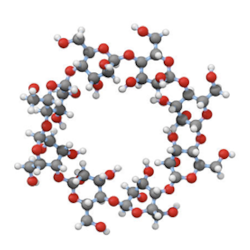
Synthesis of cyclodextrin complexes and conjugates
Témavezető: Erika Bálint (Innovative Pharmaceutical and Chirotechnological Research Group, balint.erika@vbk.bme.hu)
The project deals with the synthesis of capsaicinoid-cyclodextrin complexes and conjugates.
Módszerek: continuous-flow reactors, HPLC, LC–MS, NMR
Location: Building F II, laboratory 16A
Department of Organic Chemistry and Technology
Email: balint.erika@vbk.bme.hu
Cyclodextrins (CDs), as cyclic oligosaccharides, consist of a macrocyclic ring of glucose subunits linked by α-1,4-glycosidic bonds. They are used in pharmaceutical, food and chemical industries, as well as in agriculture. It has been known for decades, that CD complexation can lead to a significant solubility enhancement of poorly water soluble molecules, and therefore it can enable the biological testing of drugs, which could otherwise not be possible by any other means. Capsaicinoids are well-known as the main ingredients of the spicy pepper, and often used in pharmaceutical and food industries. The aim of the research work is to synthetize various capsaicine derivatives by flow chemistry and capsaicinoids–CD complexes, as well as conjugates. Further aim is to investigate the fungicide effect of capsaicinoids and CD derivatives synthesized.
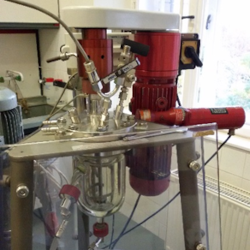
Selective, heterogeneous catalytic hydrogenations in liquid phase
Témavezető: László Hegedűs (Heterogeneous Catalytic Reactions Research Group, hegedus.laszlo@vbk.bme.hu)
The project deals with the selective heterogeneous catalytic hydrogenation of compounds having catalyst poisoning character in liquid phase to obtain important and valuable pharmaceutical intermediates. In addition, poisoning of the precious metal catalysts during these hydrogenations will be examined to find relationships between the structure of substrate and the activity.
Módszerek: autoclaves, GC–MS, HPLC, NMR
Location: Building F I, floor 2, laboratory 204
Department of Organic Chemistry and Technology
Email: hegedus.laszlo@vbk.bme.hu
The liquid-phase heterogeneous catalytic hydrogenation is a typical reduction method in the fine chemical industry (e.g. pharmaceutical industry). However, selectivity problems can arise in case of more reducible functional groups. Moreover, the reduction of compounds having catalyst poisoning character (typically substances containing nitrogen, phosphorus or sulphur) should also be accomplished, because they are usually important and valuable pharmaceutical, plastic or agrochemical intermediates. However, the activity of a catalyst (typically supported palladium, platinum, ruthenium or rhodium catalysts) often decreases or ceases completely during the hydrogenation of such type compounds, i.e. the catalyst is poisoned. To avoid these problems, increased amounts of catalyst or auxiliary materials, such as acids which convert these substrates to a shielded form, should be used. However, these methods cannot always be applied (e.g. a reactant is sensitive to acids) and, therefore, other solutions must be found. During the research work, our aim is partly to carry out hydrogenations of some newer substances (e.g. nitriles to primary amines), which can be important and valuable pharmaceutical intermediates. On the other hand, we try to obtain more detailed information about the interactions between catalytic metals and substrates. We will examine how certain factors influence poisoning of the catalysts during the hydrogenation, what kind of relationship is between the structure of substrate and the activity, as well as that of the metal catalyst. To receive more thorough information about these phenomena, we will use quantum chemical calculation methods.
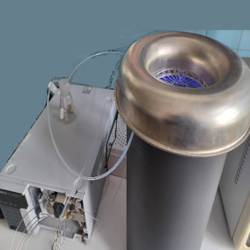
Development of photocatalysts, and their application in the synthesis of drug intermediates
Témavezető: József Kupai (Organocatalysis Research Group, kupai.jozsef@vbk.bme.hu)
The project deals with the chemoselective metal-free photocatalytic trifluoromethyl(thiol)ation of drug intermediates to obtain more lipophilic pharmaceutical intermediates. In addition, we optimize the reaction conditions, and compare the batch and flow reactions.
Módszerek: photocatalytic flow reaction, ball-milling technique, HPLC, NMR
Location: Building Ch, floor 2, laboratory 210
Department of Organic Chemistry and Technology
Email: kupai.jozsef@vbk.bme.hu
In the modern chemical industry, sustainability aspects play a crucial role, among which the use of catalysts stands out. Thanks to the catalytic processes, we can selectively produce the desired compounds with the use of less energy and resources, as well as the production of less waste. For this reason, the development of various new catalysts is essential. It is a well-established fact that the addition of trifluoromethyl and trifluoromethylthio groups has a beneficial effect on the metabolic properties of drug molecules. The incorporation of these groups into small molecules often enhances efficacy by promoting electrostatic interactions with targets, improving cellular membrane permeability, and increasing robustness towards oxidative metabolism of the drug. Therefore, we plan to build trifluoromethyl(thio) groups into drug intermediate building blocks through visible light photochemical catalysis. We will investigate the effects of various reagents, catalysts, and other reaction conditions. We will also conduct both batch and continuous flow reactions, optimizing the flow reaction parameters (i.e. flow rate, concentration, residence time). Furthermore, we plan to synthesize 4CzIPN, a versatile, cyanoarene-based donor-acceptor type, metal-free photocatalyst in a green way, using a ball-milling technique in cooperation with Comenius University in Bratislava, Slovakia.
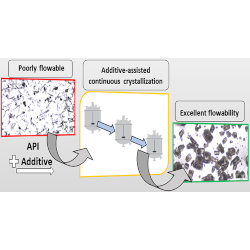
Development of batch and continuous crystallization technologies
Témavezető: Hajnalka Pataki (FirePharma Research Group, pataki.hajnalka@vbk.bme.hu)
The aim of the research is to develop batch and continuous crystallization technologies and morphology modification of active pharmaceutical ingredients (API) with formulation additives.
Módszerek: batch crystallizers, tank and plug flow crystallizers, X-ray diffraction and spectroscopic methods, image analysis, design of experiments (DoE), chemometric methods
Location: Building F II, laboratory 16D
Department of Organic Chemistry and Technology
Email: pataki.hajnalka@vbk.bme.hu
One of our research aims is to develop additive assisted crystallizations to improve the physical properties of the drug (particle size, particle size distribution, flowability). To this, it is first necessary to identify suitable drug-additive combinations in batch processes, to investigate their stability over time and the effect of additive on drug induction time (time required for the appearance of crystal nucleus in detectable size). The suitable crystallizations will then be tested in a 150 ml crystallizer based on design of experiments to identify critical process parameters. Once the ideal parameters are established, the crystallizations will be further developed in a continuous system (mixed suspension mixed product removal - MSMPR, different type of tube crystallizers, etc.). In addition to traditional used offline analysis (XRPD for crystal structure, laser diffraction for crystal size and size distribution, microscopic methods for crystal habit identification), products would be monitored and identified by inline, i.e. in-process detection. For these inline techniques feedback controls would be planned to produce crystalline drugs of suitable quality. In addition to the identification of the main physical crystal properties another important aspects are the accurate analysis of the excipient content, the flowability and dissolution properties of the products. The better processability of the crystalline drug can be ensured by the developed additive assisted continuous technologies, thus shortening the number of processing steps in the formulation technology by using high productivity continuous technologies.
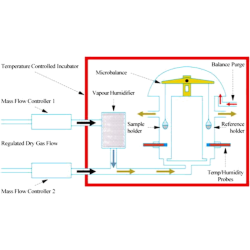
Investigation of the role of macromolecular interactions in solid pharmaceuticals
Témavezető: György Marosi (FirePharma Research Group, marosi.gyorgy@vbk.bme.hu)
The aim of the research is to clarify the relationship between the structual role of interactions of macromolecules with other components and performance of pharmaceutical technologies.
Módszerek: thermal analytical methods including DVS, X-ray diffraction, microscopy, spectroscopic and image analyses
Location: Gyömrői út 19-21, BME Building F II, laboratory 16D
Gedeon Richter Plc, Department of Organic Chemistry and Technology
Email: marosi.gyorgy@vbk.bme.hu
Need exists to clarify the relationship between the macromolecular interactions and pharmaceutical technologies. It is based on the lack of understanding regarding their complex role in the pharmaceutical processes. Solubility, robustness of processability and stability are influenced strongly by the variability of macromolecules. Understanding-based composition-process-structure-function control can be achieved through systematic investigation of macromolecular interactions in pharmaceuticals. This includes evaluation of the relaxation transitions depending on the interactions of low- and macromolecular components in solid pharmaceuticals. Water influences product attributes such as quality and safety. Complex need of the pharmaceutical industry can be fulfilled through knowledge-based governing of the effects of macromolecules on the water-activity in tablets. To completely understand water relations in a product the relationship between water activity and moisture content at a constant temperature can be determined by moisture sorption isotherms. The isotherm shape is unique to each product type due to differences in capillary, surface, and colligative effects of the components. Products that lie in the low water activity portion of the isotherm are often referred to as dry, those in the range of 0.60 aw to 0.90 aw are intermediate moisture products, and those having water activities higher than 0.90 are high water activity products. The selected analytical technics will be used for the characterization of individual components and for the evaluation of their systematic combinations. Predictions on the solubility, robustness of processability and stability will be elaborated on this basis.
